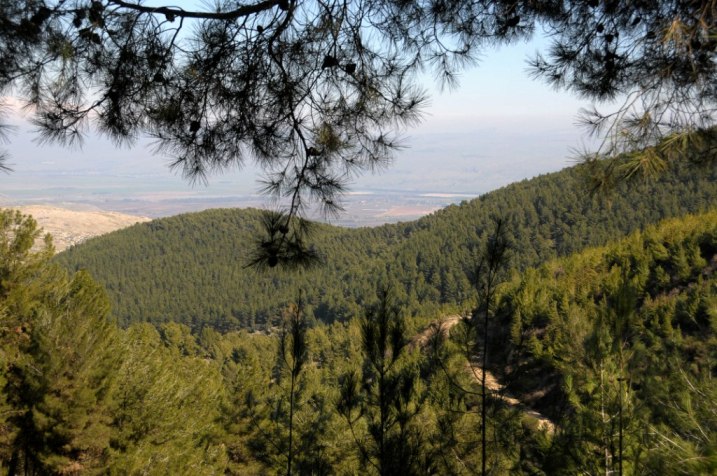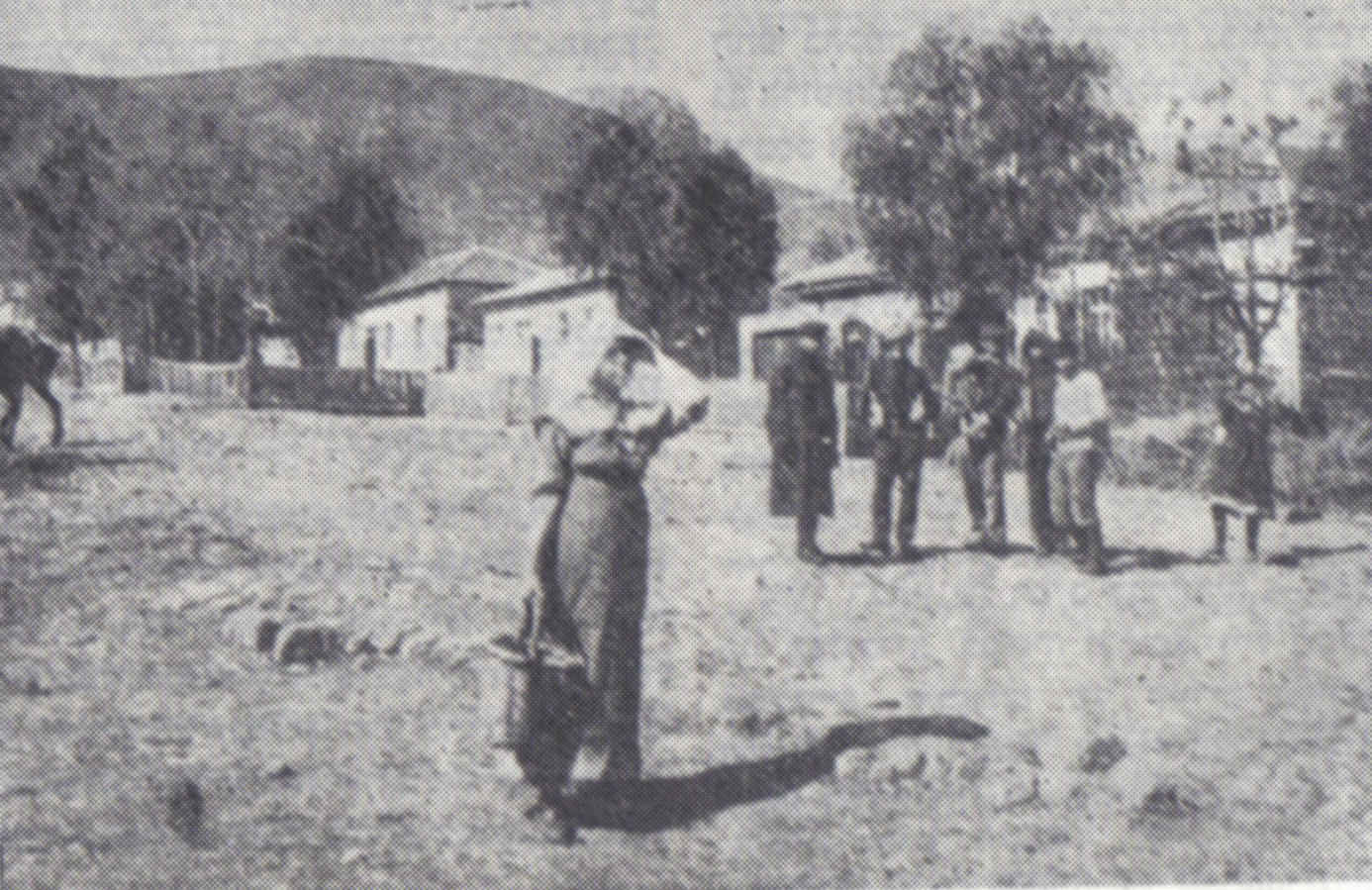|
Jamnith
Jamnith (), also Jabnith, Yavnit (), Iamnia, or in medieval parlance, Ibnit / Abnit / Ovnit, is a ruin in the Upper Galilee that came to renown during the First Jewish Revolt in the 1st-century CE. The ruin, known locally by the name ''Khurbet esh-Sheikh Banit'', or simply ''Kh. Banît'', lies about to the northeast of Safed, in the Biriya Forest, and was once a fortified town towards the northeast of Mount Canaan (Hebrew: ''Har Kena'an''), upon a hill called ''Har Yavnit''. The hill on which the village ruins lie rises above sea level and overlooks the Hula valley. Access to the ruin is now restricted because of an enclosed military installation built over the site. The village is mentioned twice in the writings of Josephus as being in the Upper Galilee; once in ''The Jewish War'' (2.20.6) under the appellation Ἰαμνειθ, and again in ''Vita'' §37 under the name Ίαμνια, and is distinguished from the Jamnia of Judaea. Josephus testifies of himself that he assis ... [...More Info...] [...Related Items...] OR: [Wikipedia] [Google] [Baidu] |
Priestly Divisions
The priestly divisions or sacerdotal courses ( ''mishmar'') are the groups into which kohanim "priests" were divided for service in the Temple in Jerusalem in ancient Judea. The 24 priestly divisions are first listed in 1 Chronicles 24. Role in the Temple 1 Chronicles 24 refers to these priests as "descendants of Aaron." According to the Bible, Aaron had four sons: Nadab and Abihu, Eleazar and Ithamar. However, Nadab and Abihu died before Aaron, and only Eleazar and Ithamar had sons. In Chronicles, one priest ( Zadok) from Eleazar's descendants, and another priest, Ahimelech, from Ithamar's descendants, were designated by David, ruler of the United Kingdom of Israel, to help create the various priestly work groups. Sixteen of Eleazar's descendants were selected to head priestly orders, while only eight of Ithamar's descendants were so chosen; this imbalance was done because of the greater number of leaders among Eleazar's descendants. According to the Talmud, the 24-family d ... [...More Info...] [...Related Items...] OR: [Wikipedia] [Google] [Baidu] |
Josephus
Flavius Josephus (; , ; ), born Yosef ben Mattityahu (), was a Roman–Jewish historian and military leader. Best known for writing '' The Jewish War'', he was born in Jerusalem—then part of the Roman province of Judea—to a father of priestly descent and a mother who claimed Hasmonean royal ancestry. He initially fought against the Roman Empire during the First Jewish–Roman War as general of the Jewish forces in Galilee, until surrendering in AD 67 to the Roman army led by military commander Vespasian after the six-week siege of Yodfat. Josephus claimed the Jewish messianic prophecies that initiated the First Jewish–Roman War made reference to Vespasian becoming Roman emperor. In response, Vespasian decided to keep him as a slave and presumably interpreter. After Vespasian became emperor in AD 69, he granted Josephus his freedom, at which time Josephus assumed the Emperor's family name of '' Flavius''. Flavius Josephus fully defected to the Roman s ... [...More Info...] [...Related Items...] OR: [Wikipedia] [Google] [Baidu] |
Yavne
Yavne () is a city in the Central District (Israel), Central District of Israel. In 2022, it had a population of 56,232. Modern Yavne was established in 1949. It is located near the ruins of the ancient town of Yibna (known also as Jamnia and Jabneh), later the village of Yibna, and today the archeological site of Tel Yavne. Ancient Yavne holds a special place in Jewish history because of the ancient town's contribution to Judaism's recovery and reconstitution under Tannaim, sages Yohanan ben Zakkai, ben Zakkai and Gamaliel II following the Siege of Jerusalem (70 AD), destruction of the Second Temple. This period, sometimes known as the "Yavne period", became a crucial mark in the development of Rabbinic Judaism. The city has a history of Winemaking, producing wine throughout much of antiquity, as indicated by both archeological findings and ancient sources. Name In many English translations of the Bible, Yavne was known as Jabneh . In Greek and Latin-speaking sources, it was kn ... [...More Info...] [...Related Items...] OR: [Wikipedia] [Google] [Baidu] |
Sukkah (Talmud)
Sukkah (, ''hut'') is a tractate of the Mishnah and Talmud. Its laws are discussed as well in the Tosefta and both the Babylonian Talmud and Jerusalem Talmud. In most editions it is the sixth volume of twelve in the Order (Mishnaic section) of Moed. Sukkah deals primarily with laws relating to the Jewish holiday of Sukkot. It has five chapters. Mishnah Mishnah Sukkah contains five chapters. Included in its scope are the Sukkah, or hut, which is lived in during Sukkot, the laws concerning each of the four species of vegetation which are waved during prayers over the holiday, and Simchat Beit HaShoeivah, the Celebration of the Water-Drawing (, ), which took place at the Temple in Jerusalem on the nights of Sukkot. *Chapter one begins with a discussion in the first mishnah of the maximum and minimum height of a Sukkah, the required number of walls to make it kosher, and the amount of shade required in relation to sunlight. Other mishnayot (mishnayot 2-11) in chapter one discus ... [...More Info...] [...Related Items...] OR: [Wikipedia] [Google] [Baidu] |
Judah III
Judah III (or Nesi'ah II; Hebrew: יהודה נשיאה; יודן נשיאה), Yudan Nesiah, was a prominent Jewish sage, who held the office of ''Nasi (Hebrew title), Nasi'' of the ancient Jewish Sanhedrin between about 290 and 320 CE (fourth generation of amoraim). Biography He was the son of Gamaliel IV, and grandson of Judah II. It is often difficult to know when the Mishna and Talmud are referring to Judah II or Judah III; they do not clearly distinguish between them. Since the title "Nesi'ah" was borne by both, which of the two in any citation is meant by "Judah Nesi'ah" can be gathered only from internal evidence, especially from the names of the scholars mentioned in the context. He was a pupil of R. Johanan bar Nappaha (d. 279). In a question regarding the time of the new moon, which he sent to Rav Ammi, he introduces a teaching taught to him by Johanan with the words: "Know that R. Johanan has taught us thus all his life long". Judah III commissioned Johanan's pupils ... [...More Info...] [...Related Items...] OR: [Wikipedia] [Google] [Baidu] |
Banias
Banias (; ; Judeo-Aramaic, Medieval Hebrew: , etc.; ), also spelled Banyas, is a site in the Golan Heights near a natural spring, once associated with the Greek god Pan. It had been inhabited for 2,000 years, until its Syrian population fled and their homes were destroyed by Israel following the 1967 Six-Day War. It is located at the foot of Mount Hermon, north of the Golan Heights, the classical ''Gaulanitis'', in the part occupied by Israel. The spring is the source of the Banias River, one of the main tributaries of the Jordan River. Archaeologists uncovered a shrine dedicated to Pan and related deities, and the remains of an ancient city dating from the Hellenistic and Roman periods. The ancient city was first mentioned in the context of the Battle of Panium, fought around 200–198 BCE, when the name of the region was given as the . Later, Pliny called the city (). Both names were derived from that of Pan, the god of the wild and companion of the nymphs. Herod th ... [...More Info...] [...Related Items...] OR: [Wikipedia] [Google] [Baidu] |
Rava (amora)
Abba ben Joseph bar Ḥama ( – 352 CE), who is exclusively referred to in the Talmud by the name Rava (), was a Babylonian rabbi who belonged to the fourth generation of amoraim. He is known for his debates with Abaye, and is one of the most often cited rabbis in the Talmud. Biography He was born about 280 CE in Mahoza (a suburb of Ctesiphon, the capital of Persia), where his father was a wealthy and distinguished scholar. In his youth Rava went to Sura, where he attended the lectures of Rav Chisda and associated with Rami bar Hama. About ten years after Rami's death Rava married his widow, the Rav Chisda's daughter. It is said that earlier Rav Chisda's daughter sat in her father's classroom, while his students, Rava and Rami bar Hama, stand before them. When Rav Chisda asked her which of the two she wants to marry, she replied "both of them," and Rava added, "I'll be the last one" (commentators let us know that she indeed married Rami first and Rava second). They had fiv ... [...More Info...] [...Related Items...] OR: [Wikipedia] [Google] [Baidu] |
Abaye
Abaye () was an amora of the fourth generation of the Talmudic academies in Babylonia. He was born about the close of the third century and died in 337. Biography Abaye, according to Talmudic tradition, was the head of the Pumbedita Academy until the day of his death. He was known as a modest and honest man, supporting himself through farming. He lived most of his life in poverty. Abaye was born as the only son of Kilil.Bavli, Zevachim 118b. His father died before Abaye was born, and his mother died during childbirth; he was adopted by his uncle, Rabbah bar Nahmani. His name Abaye was often called "Nahmani" by his friends. According to one opinion, first mentioned by Rashi, he was called Nahmani because he was raised by Rabbah bar Nahmani, but according to another opinion, his original name was actually Nahmani. To avoid confusion with the name of his adoptive father, he was given the nickname "Abaye," which is an acronym of the verse: "Asher-Bkha Yerukham Yatom" (Hosea 14:4) ... [...More Info...] [...Related Items...] OR: [Wikipedia] [Google] [Baidu] |
Talmudic
The Talmud (; ) is the central text of Rabbinic Judaism and the primary source of Jewish religious law (''halakha'') and Jewish theology. Until the advent of modernity, in nearly all Jewish communities, the Talmud was the centerpiece of Jewish cultural life and was foundational to "all Jewish thought and aspirations", serving also as "the guide for the daily life" of Jews. The Talmud includes the teachings and opinions of thousands of rabbis on a variety of subjects, including halakha, Jewish ethics, philosophy, customs, history, and folklore, and many other topics. The Talmud is a commentary on the Mishnah. This text is made up of 63 tractates, each covering one subject area. The language of the Talmud is Jewish Babylonian Aramaic. Talmudic tradition emerged and was compiled between the destruction of the Second Temple in 70 CE and the Arab conquest in the early seventh century. Traditionally, it is thought that the Talmud itself was compiled by Rav Ashi and Ravina II aro ... [...More Info...] [...Related Items...] OR: [Wikipedia] [Google] [Baidu] |
Yavne'el
Yavne'el (, ) is a moshava and Local council (Israel), local council in the Northern District (Israel), Northern District of Israel. Founded in 1901, it is one of the oldest rural Jewish communities in the country. According to the Israel Central Bureau of Statistics (CBS), in it had a population of . In 2008 the population had been 3,100, with a growth rate of 1.4%. History Archaeology: Bronze Age to Mamluk period Remains from the Ancient Near East#Late Bronze Age, Late Bronze Age,, cited in Ancient Near East#Iron Age, Iron Age I–II, Achaemenid Empire, Persian, Hellenistic period, Hellenistic, Roman Empire, Roman, Late Byzantine Empire, Byzantine, History of Israel#Early Muslim period (634–1099), Early Muslim and Mamluk Egypt, Mamluk periods have been found here. A residential building constructed in the Umayyad Caliphate, Umayyad period that continued to be inhabited during the Abbasid Caliphate, Abbasid period (eighth–tenth centuries CE) has been excavated here. Otto ... [...More Info...] [...Related Items...] OR: [Wikipedia] [Google] [Baidu] |




